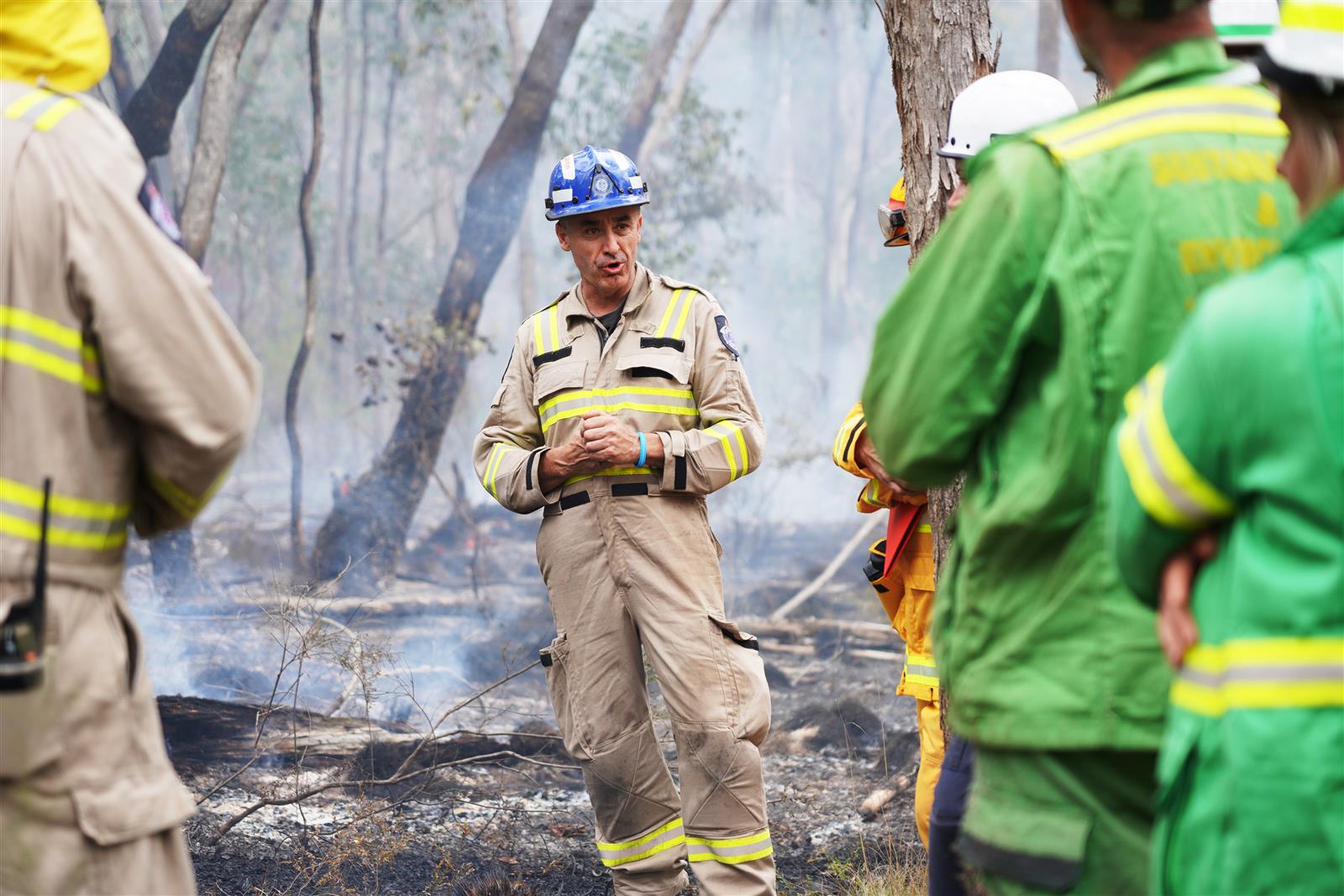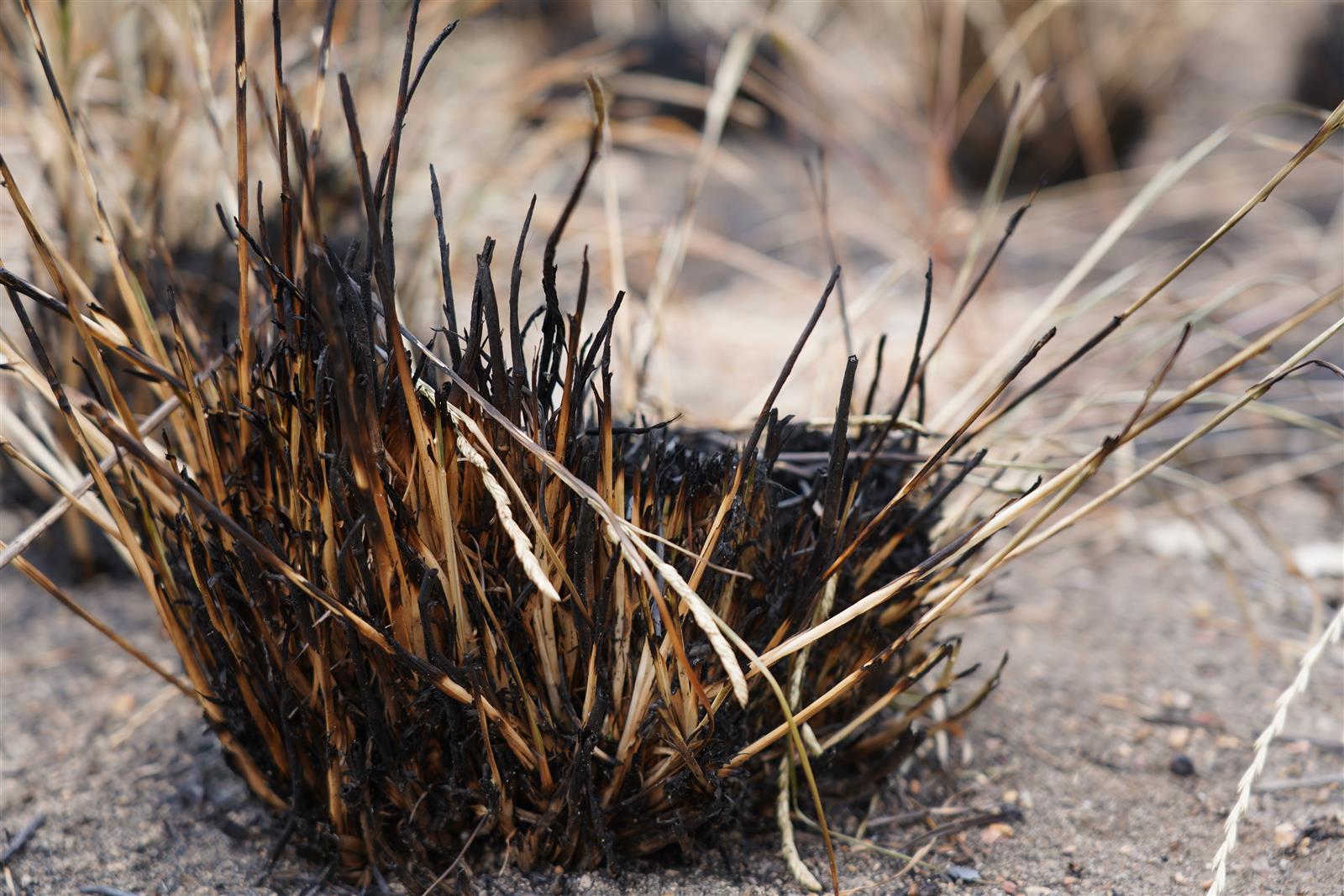 Bushfire instructor Brett Wagstaff
Bushfire instructor Brett Wagstaff
On the eve of the 2024-25 bushfire season, CFA and Forest
Fire Management Victoria (FFMVic) hosted their annual
multi-agency bushfire investigation course in Castlemaine.
Participants from CFA, FFMVic, Fire Rescue Victoria (FRV), Parks Victoria, Victoria Police and Forensic Services learned how to investigate the origin and cause of bushfires.
The five-day course is designed for new fire investigators and is a mixture of classroom theory and practical training. Heading up the team of bushfire investigation trainers was Brett Wagstaff, a bushfire instructor based in Kangaroo Flat in District 2.
“We undertake classroom training. We also back that up by spending time out in the bush, lighting fires, observing burn and char patterns and then investigating those fires,” Brett said.
“This year, we chose to have fires in both forest and grass to cater for both FFMVic and CFA, and to ensure that we cover all fuel types.”
Fire investigation plays a crucial role in fire prevention, and ensuring the presence of a statewide network of skilled fire investigators is an important part of CFA’s function. Accordingly, CFA has committed significant resources, time and effort into the fire investigation training pathway.
One of the course participants, Wayne Munro, is a CFA member with close to 40 years of firefighting experience under his belt. He’s a member of Grassdale Fire Brigade in South West Region and also the group officer for Merino.
“I’ve been on the other end, fighting fires and then in command-and-control structures, and this course is part of my continual learning that CFA offers,” Wayne said. “I want to investigate fires to try to find the causes so that we can stop some of the fires in our area. But I also wanted to hand back some of my knowledge and experience to CFA.”
Some of the techniques used to detect the path of a fire include staining on rocks, char patterns on trees and orientation of leaves after a fire has passed through. For Wayne, one of the biggest takeaways from the course was changing the way he now looks at fires.
“I’ve learned to look at fires in reverse and to look at minute things. Traditionally, we’ve always been taught to bring in the bulldozers, add the water, put the fire out and then go home. And now we’re learning to make sure the scene is protected, to get down on our hands and knees and look at the way the grass is burned, how the leaves are burned and watching the trees. It has totally opened my eyes up to a whole new way of looking at fires,” Wayne explained.
Baxter Fire Brigade’s Kate Sanderson has been a member of CFA for seven years. Although her time at CFA has been relatively short, fire investigation has been one of her long-held ambitions.
“It’s something I wanted to do for a long, long time and I researched the pathways to get into fire investigation,” Kate said. “I came across CFA and discovered that if I had at least five years’ volunteer experience, I would be considered for training [in fire investigation]. So that’s the reason I joined CFA, and I have loved the experience and have learned so much along the way.”
For the practical elements of the course, the participants were divided into small groups to observe active fires in grassland and forest, before returning the following day to investigate these fires. On the final day of the course, they were tasked with investigating another group’s fire scene. The opportunity to observe live fire in real settings is a key feature of the course.
“It was a great course. To be able to observe a fire in the bush and watch its behaviour was so invaluable,” Kate said. “It is known that terrain and weather affect fire behaviour, but it was so useful to stand back and watch how it burns, rather than from a firefighter’s perspective of putting out a fire as soon as possible.”
Pentland Group Officer and Myrniong Fire Brigade Firefighter Dale Salathiel’s pathway to fire investigation was informed through his role with Victoria Police where he has been exposed to arson investigations, and the challenges of trying to determine fire cause.
“I’ve just had an interest in this space, with investigations that I do through my job at Victoria Police – things that I’ve seen with arson and the investigative tools that come with that,” Dale said.
The five-day course is only the first step in the process to becoming a bushfire investigator. After the course, each participant is paired with a mentor and tasked with attending and investigating five scenes over the following 18 months.
At the time of writing, Dale had already attended four scenes, with his first coming the weekend after the course finished.
“I finished the course on the Friday and by the weekend I was straight into it. I ended up going to the large fire at Kadnook, the Casterton-Edenhope Road fire, which was a two-day deployment,” Dale said
Visiting scenes and investigating fire origin and path is just one piece of the fire investigation puzzle. Investigators must spend a significant amount of time preparing written reports after the scene examination is completed. This element was also covered in the course.
“It’s one thing to travel to the scene and go back home. But it’s the report writing. It’s collating the weather, the lightning data, the witness statements, the maps, and writing up the report so someone who wasn’t at the fire can understand what occurred,” Kate explained.
As well as the opportunity to learn from experienced trainers and mentors, Kate has found the support from her fellow CFA members on the course to be invaluable.
“The six of us are staying in touch and telling each other when we’ve been out to scenes, so that’s been really helpful. Our stories and backgrounds are so different; it’s just so exciting to be amongst them,” Kate said.
Dale added: “I think that the group motivates each other by working off one another, staying in touch and communicating. I think it’s helped us all work together and help bring each other through.”
For anyone thinking about undertaking the bushfire investigation pathway, Wayne Munro had these words of wisdom.
“If you’re joining this course just to get a tick on a piece of paper, I’d suggest not doing it. You have to do a lot of training to become accredited. But if you’re interested in fine detail and want to help the community I’d say go for it every day. CFA is great at training fire investigators.
“If you wish to follow your dream or passion, CFA gives you plenty of opportunities to do it – and I think it’s fantastic.”
.JPG) Wayne Munro (right)
Wayne Munro (right)-

-
-
-
| Submitted by |
News and Media |